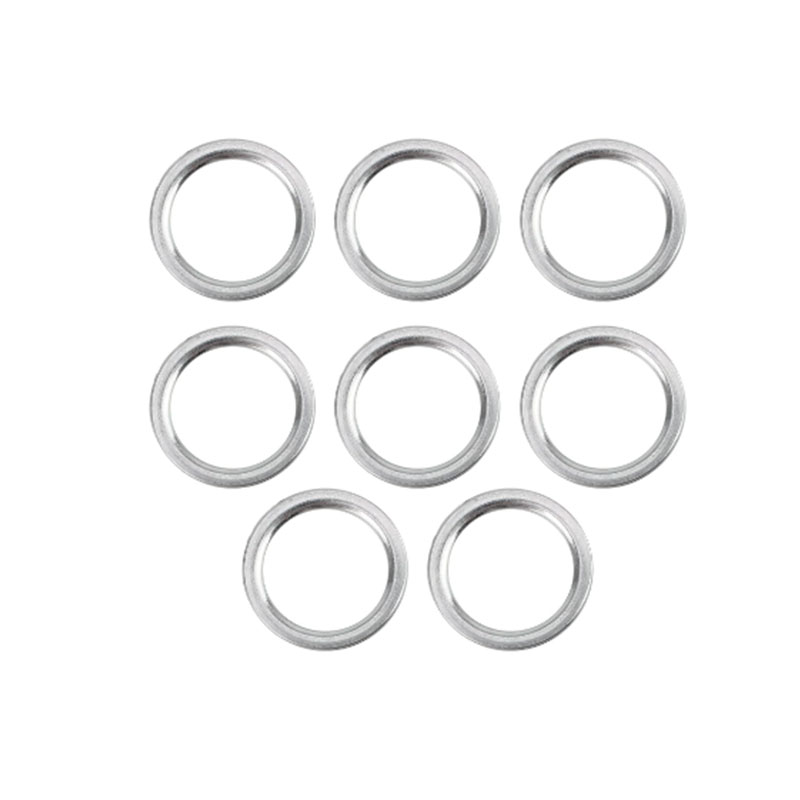17mm Oil Drain Plug Specifications and Installation Guide for Optimal Performance
Understanding the 17mm Oil Drain Plug Importance and Maintenance
When it comes to vehicle maintenance, one of the most important components often overlooked by car owners is the oil drain plug. The 17mm oil drain plug, in particular, is a crucial part of many engines, ensuring that engine oil can be safely drained during changes and maintenance. This article aims to explore the significance of the 17mm oil drain plug, its role in automotive maintenance, and best practices for its upkeep.
What is an Oil Drain Plug?
The oil drain plug is a small but vital component typically located at the lowest point of an engine oil pan. It serves as a seal for the oil, preventing any leakage while the vehicle is in operation. When it comes time to change the oil, the drain plug is removed, allowing the used oil to flow out completely. This ensures that the new oil can circulate efficiently, keeping the engine lubricated and functioning optimally.
The Significance of the 17mm Size
The 17mm oil drain plug is a common size used in various makes and models of vehicles. Its specification is crucial because using the wrong size can lead to improper sealing and leakage. If the plug is too tight, it may strip the threads or even crack the oil pan. Conversely, if it is too loose, it can cause oil to leak, leading to a drop in oil levels and potential engine damage.
Installation and Removal
When changing the oil, proper installation and removal of the 17mm oil drain plug are essential. To remove the drain plug, a 17mm socket wrench or a suitable tool is used to unscrew it counterclockwise. It’s crucial to ensure that the engine is cool before performing this operation to avoid burns from hot oil.
Once the old oil has drained completely, the drain plug should be reattached with an appropriate torque. Over-tightening can lead to stripping, while under-tightening can result in leaks. Using a torque wrench can ensure that the plug is secured within the manufacturer’s recommended specifications.
Common Issues with Oil Drain Plugs
Over time, oil drain plugs can develop several issues. One common problem is stripping of the threads, which can occur over repeated removals and installations. If the threads are stripped, a new drain plug or a thread repair kit may be necessary to ensure a seal.
17 mm oil drain plug

Another issue can arise from improper sealing, often due to a missing or damaged washer. Most oil drain plugs come with a crush washer that helps create a seal. If this washer is not replaced during each oil change, or if it is installed improperly, it can lead to leaks.
Best Practices for Maintenance
To keep the oil drain plug functioning properly, several best practices can be followed
1. Regular Inspection During routine oil changes, inspect the condition of the draining plug and its threads. Look for signs of wear, stripping, or damage.
2. Use the Right Tools Always use the proper tools for your oil drain plug to avoid damaging it or the surrounding components.
3. Replace the Washer Always install a new crush washer when changing the oil, as it ensures a tight seal and prevents leaks.
4. Follow Manufacturer Guidelines Refer to the vehicle’s manual for specific information regarding the torque specifications and recommended maintenance intervals.
5. Be Mindful of Oil Changes Regular oil changes are crucial not just for the engine but also for the health of the oil drain plug. Old, contaminated oil can cause sludge build-up, leading to more operational issues.
Conclusion
The 17mm oil drain plug might seem like a minor component of your vehicle, but it plays a vital role in the overall health of the engine. By understanding its function, recognizing common issues, and adhering to best maintenance practices, you can help prolong the life of both the drain plug and your engine. Regular attention to this small part can prevent larger, more costly mechanical problems down the road, ensuring a smoother and more reliable driving experience.
-
Simplifying Oil Changes: A Comprehensive Guide to Oil Drain Plugs and Their Variants
News Aug.04,2025
-
Mastering Oil Drain Maintenance: Solutions for Stripped, Worn, and Upgraded Oil Plugs
News Aug.04,2025
-
Fixing Oil Pan Plug Issues: Leaks, Stripped Nuts, and the Right Replacement Solutions
News Aug.04,2025
-
Everything You Need to Know About Oil Drain Plugs: Sizes, Fixes, and Upgrades
News Aug.04,2025
-
Choosing the Right Oil Drain Plug: A Guide to Sizes, Materials, and Drain Innovations
News Aug.04,2025
-
A Complete Guide to Automotive Drain Plugs: Types, Problems, and Innovative Solutions
News Aug.04,2025
-
The Ultimate Guide to Car Repair Kits: Tools and Essentials Every Driver Should Own
News Aug.01,2025
Products categories















